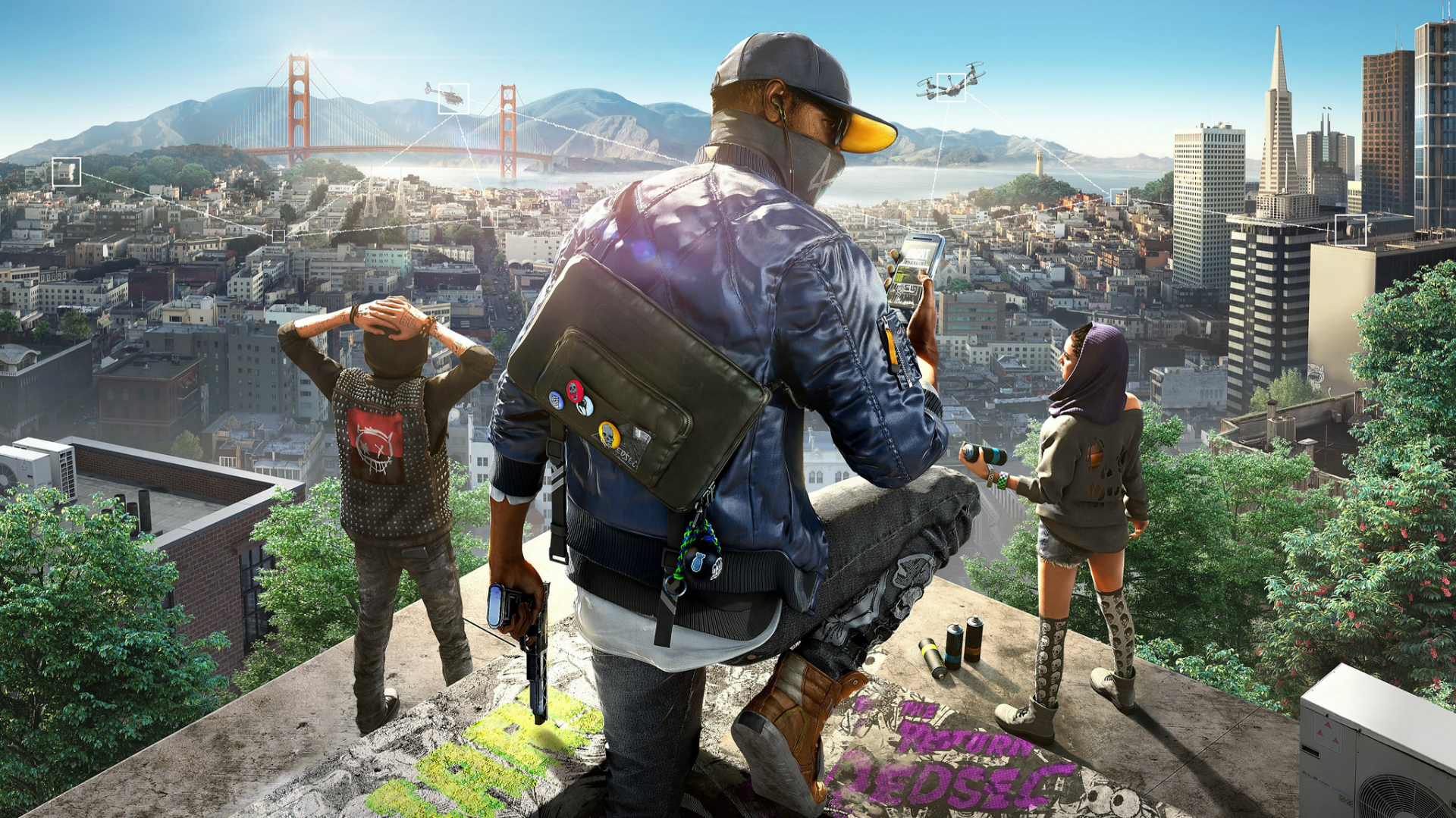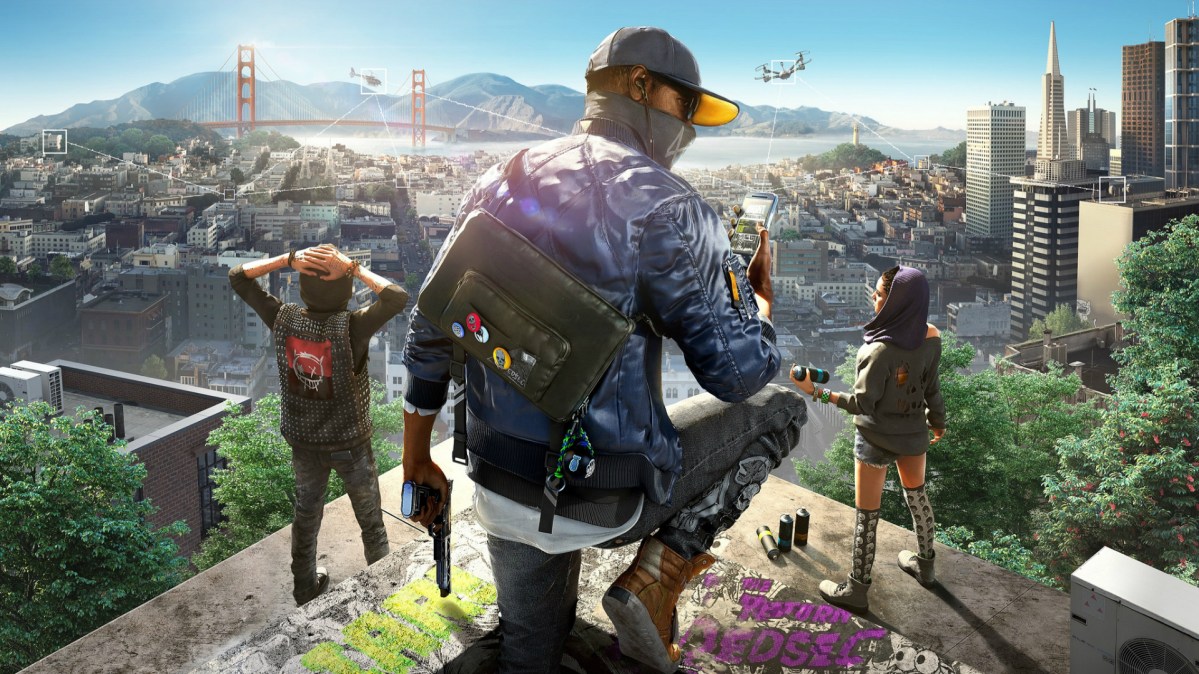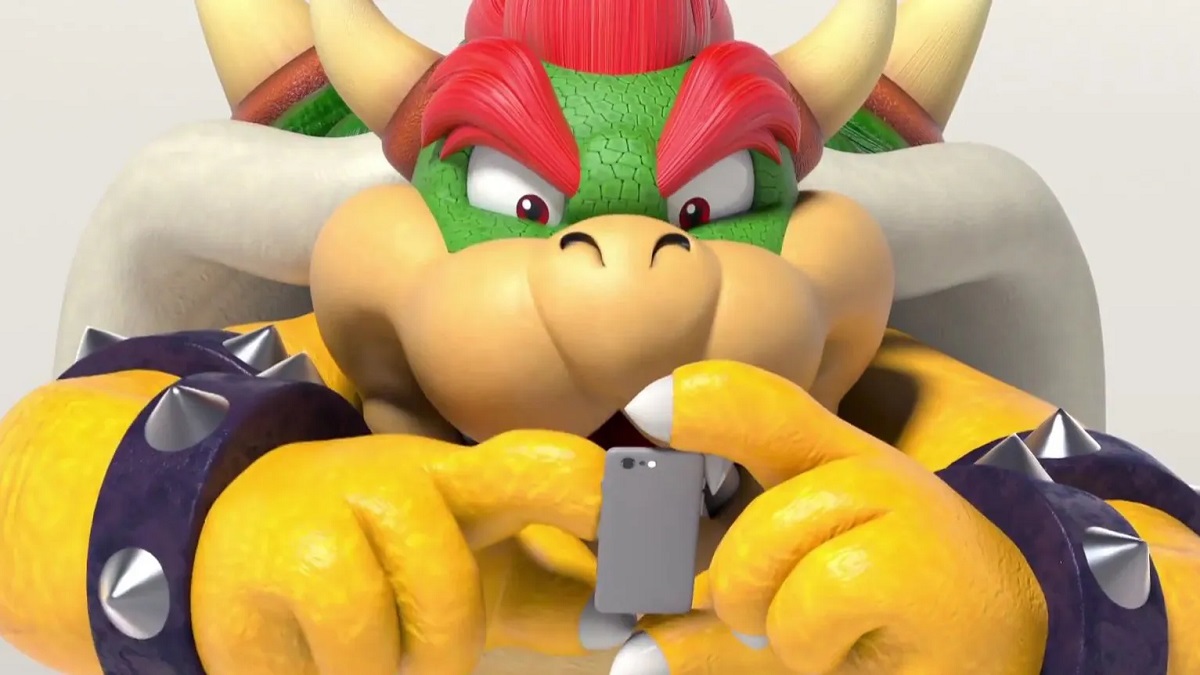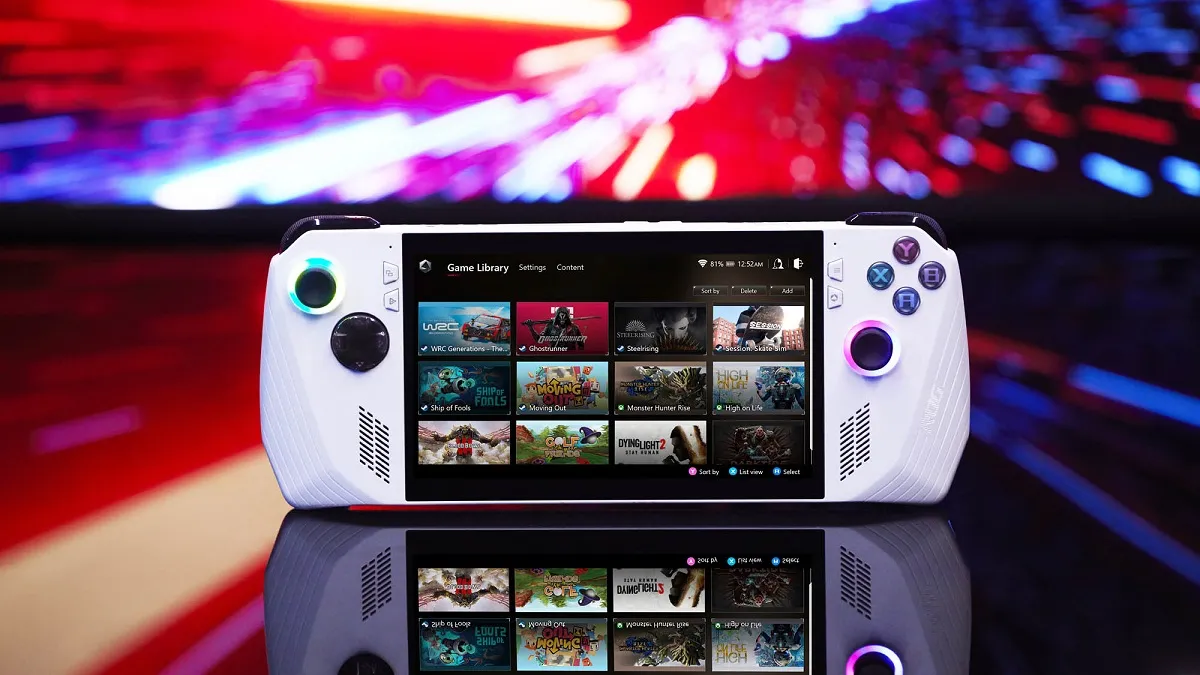HACK THE PLANET!
Since releasing in 2014, Ubisoft’s Watch Dogs has meant something different to almost everyone who played it. Though the open-world hack-a-thon is often critiqued for lacking personality and the graphical downgrade debacle, it still sits pretty at an 80 on Metacritic (whether or not this means anything to you is highly subjective). As oft-maligned as it seems to be, reviewers and players clearly saw potential.
It certainly didn’t re-invent the wheel, and many jokes were made about bland protagonist Aiden Pierce and his “iconic” hat. But most who played came to one overwhelming consensus: Watch Dogs 2 would probably be one hell of a game. For the most part, it is.
I came into the review thinking I’d experience thematical whiplash; the first game was revenge tale, and the sequel looked to be a dorky, light-hearted take on hacking culture in San Francisco. After finishing it, I think the change to some much-needed levity was a clever move that led to some surprisingly good character work and political commentary.

Watch Dogs 2 (PC, PS4 [reviewed], Xbox One)
Developer: Ubisoft Montreal
Publisher: Ubisoft
Release: November 15, 2016 (PS4, Xbox One), November 29, 2016 (PC)
MSRP: $59.99
Watch Dogs 2 stars Marcus Holloway, a young omnipotent hacker that is everything that Aiden Pearce wasn’t. He’s charming, often hilarious, and plays well with others. The best way to think of him is like a confident, black Scott Pilgrim — he’s basically incredible at everything and you’ll never really get any backstory as to why, because it doesn’t matter. He’s just there for you to have a good time. As a part of DedSec, a hacking collective opposed to technology’s increasingly pervasive grasp, you’ll accrue followers and bring truth to the people unaware of just how much of their digital footprints are used against them.
San Francisco has recently adopted ctOS, an operating system that links the entire city under the guise of simplifying the lives of residents. DedSec opposes Big Data, and Marcus especially has reasons to hate the cold, mechanical tendrils of surveillance programs reaching into his life. The program predicted that he would be a criminal, leaving him with a stained record. By joining DedSec, he has a chance to expose the flaws in both ctOS and the idea of trusting tech with the ones and zeroes that record everyone’s lives.
How you have Marcus do this is up to you. Using his phone, he can hack every vehicle and camera in the city, providing him with transportation and eyes everywhere. If you just accept his hacking abilities as magic from the get-go, you’re gonna have a much better time (why can he see in hackervision doesn’t make any goddamn sense). Unlike the first Watch Dogs, hacking doesn’t seem like a little bit of extra flavor to spice up an average shooter. Instead, every ability seems like a toy, a challenge to incorporate into your next objective, daring you to be as creative as you can be.
Most missions go a little something like this: there’s a building that you need to infiltrate, with one or two spots that you need to physically reach and interact with. To do that, you have to sneak by armed guards who are ready to shoot on sight. Whether you want to accomplish this by playing creatively and using every tool at your disposal or by shooting every face you see is up to you. I was happy to find that you can play all the way through non-lethally, using only a stun gun and melee abilities to leave everyone alive (though still rocking a mean concussion). I’m always weary of saying there’s a “right” way to play a game, but playing non-lethally makes Watch Dogs 2 much more enjoyable, and seems to suit Marcus’ character better. Considering violence is never really mentioned in any of the cutscenes, it didn’t seem right to have him joking and generally enjoying his rebellious life and then shotgun off hundreds of faces.

When I chose to play as peacefully as possible, I found myself using every trick up my sleeve to avoid the loss of human life. For instance, one mission tasked me with destroying three vans while guards patrolled around them. While it was deeply tempting to use a grenade launcher to light them up, my Marcus wouldn’t do that. Instead, I used my remote controlled quadcopter to fly into the skies above and survey the scene and lure the baddies away with stun bombs and distractions. When I felt they were far enough away that I wouldn’t accidentally kill them, I hacked into a forklift, picked up the vans, and dropped them into the ocean. Some of my favorite games are the ones that allow you to feel like you’re breaking them. Watch Dogs 2 let me at least feel like I was thinking of solutions the developers may have never intended for yet still provided the means and virtual space to achieve.
This being a game in 2016, killing your way through every mission is a viable option. There are plenty of weapons to play with, like auto-shotguns and grenade launchers, and the shooting and intuitive cover system are more than adequate if you want to get your jollies via murder. But despite Marcus’ seemingly inhuman superpowers, he’s human in that a few bullets is enough to end his hacking career/life. Taking cover for a few seconds is enough for him to recover, but his relatively low health is all the more incentive to try and play the game as the stealth puzzler that it’s better suited to being. I’d go so far as to say removing guns entirely would benefit the series, but having both options entices a wider playerbase, and Ubisoft wants money, so I get it.
Watch Dogs 2 is a generous game in many ways. Fast travel is available from the start, excising the monotonous long-distance drives that are usually associated with open-world games (though driving as a whole is much-improved, having a more arcadey feel behind it). At any time you can call vehicles that you have purchased and have them delivered to your location, so you’re really only on-foot when you choose. There’s a great wealth of activities to take part in ranging from drone and go-kart races to hacking ATMs and seeing how people react when you give and take away their money. My two favorite activities were going around and finding landmarks to take selfies in front of to gain more followers, and solving security puzzles that unlocked the best abilities on the skill tree.
The whole tech/phone angle is used in clever ways as both window dressing and your actual interface with the world. Your pause menu is your phone and you can download apps that allow you to be an Uber driver, change the color filter of the world, or download songs. If you want more songs, you have to hear them in-game and use your SoundHound equivalent to pick it up. It makes sense as the way that Marcus and his friends interact with their surroundings.

You can also use the phone to initiate co-op missions. Finding partners this way is simple, but not as interesting as the interconnected world that you can meet other players through. Ubisoft found an issue that disabled the seamless multiplayer for some of the time I was playing through for review, which it’s confident it can fix before release. However, I had a couple of days to play with it and am confident in talking about how it works. When starting single-player missions, you will sometimes find yourself being hacked and thrown into a small session of hide-and-seek, in which you have to scan NPCs until you find the actual player who’s trying to steal your data. Another mode is Bounty Hunt: when being chased by the police in single-player, another person might be enlisted by the cops to try and track you down. It adds an extra thrill to being hunted, and is fun on both sides.
This can be frustrating if you just want to play solo, but you could turn it off. I found it easy enough to ignore when I wanted to play alone and jump in when I wanted to ruin someone’s day. You can also earn cosmetic items (of which there are many, and I was dressed in a dapper-as-heck suit the entire time) by performing well, so there’s an extra carrot on the stick. I’ll probably jump back in after the review for more multiplayer, which is honestly not something I say often.
A few technical issues marred the mostly-impressive rendering of San Francisco. There were a few streets I drove down that were barren before people and cars both appeared as if by sorcery. One time I was in a car and rain was cascading down, but a cutscene initiated and rain was falling on my shoulders inside of the closed-top vehicle. Driving in first-person seemed to make my arm detach from my body once in a while. By far the most egregious problem was that three times during my thirty-hour playthrough, the framerate took a huge dive. Suddenly I was viewing the world at fifteen frames per second, with awful screen tearing that made the game nigh-unplayable. I had to quit to the main menu and load back in for it to stop. Again, this didn’t happen often, and hopefully a patch is all it takes to fix it. For what it’s worth, this happened on both my PS4 and PS4 Pro when I tested it.

I initially thought Marcus’ friends looked like Ubisoft was trying too hard to replicate a dated take on hacking culture with characters like Wrench who wears studded leather, a mask that has a digital emoticons for eyes, and has the symbol for anarchy tattooed on his neck. And you know what? These characters are a bunch of dorks, but in an entertaining endearing way. Yeah, they dress like what I probably thought was cool when I was ten years old. Sure, they make some forced video game references that don’t always stick the landing. Often they have awful lines like “Hella cool. Coolocity.” But they also seem self-assured in a way that’s nice to see in a game. That Marcus, a cool guy who’s presented as very capable and social can also nerd out about a hypothetical Aliens Versus Predator scenario is a positive representation of ‘geek culture’ (as useless as that terms is nowadays). It’s a far cry from the usual binary nerd/jock stereotypes we see in media.
Perhaps what surprises me the most about Watch Dogs 2 is that it’s unafraid to talk about topical cultural and political issues without batting an eye. If you’re the type that wants video games to be an escape (as if games are made in a vacuum, free from the context of the individual developers that work together to create these worlds for us), you might be uncomfortable. Rigged elections, systemic racism being used to predict crimes and lead to gentrification, and a lack of diversity in tech jobs are all subjects tackled here. As I mentioned earlier, Marcus is black, and Ubisoft explores what that means in the very white Silicon Valley tech scene.
One mission in particular has Marcus accompany Horatio, another black man in DedSec, to his job at Nudle (Watch Dogs‘ Google equivalent). The following exchange occurs (exact words might be slightly off):
Marcus: “I’m scared, man. No one looks like us.”
Horatio: “What do you call a black man surrounded by 1000 white people? Mr. President.
Marcus: “But with two of us here in the same place, they’re gonna think we’re plotting.
Horatio: “We ARE plotting!”
Later, Horatio muses that “If [he] had a nickel for every time [he] was complimented for being well-spoken” he’d be rich. These moments are presented in a humorous fashion, but they cut with razor precision. Whether these references go far enough to make any statement beyond acknowledgement isn’t for me to decide. But even acknowledgment feels refreshing in a AAA game. The same goes for characters like a fellow hacker who has Asperger’s syndrome, and a transwoman in the San Francisco government who you ally with; these characters seem to have been crafted with respect, like the developer realized there were colors it had never used on its palette when painting them. It doesn’t come across as “diversity for diversity’s sake,” whatever the heck that means.
I expected Watch Dogs 2 to be a paint-by-numbers sequel — more guns, more cars, a bigger playground. Instead, it gives players freedom to play with the world with hackmagic the way they want to, and crafts a memorable, mostly lighthearted story that’s just a lot of fun. Considering the heavy subject matter woven in, that’s even more of an accomplishment than it seems like. After playing a bit of the first game, I was dreaming of a better second game with a much more compelling main character. Now, after finishing the second? I’m ready for the third game, but can we stick with Marcus for the rest of the series?
Oh, and Windows 10 decided to update when I finished this review the first time, deleting everything I did and making it so I had to rewrite this two hours before embargo. DedSec, is that you? 8.5 is a great score, please never touch my computer again.
[This review is based on a retail build of the game provided by the publisher.]





